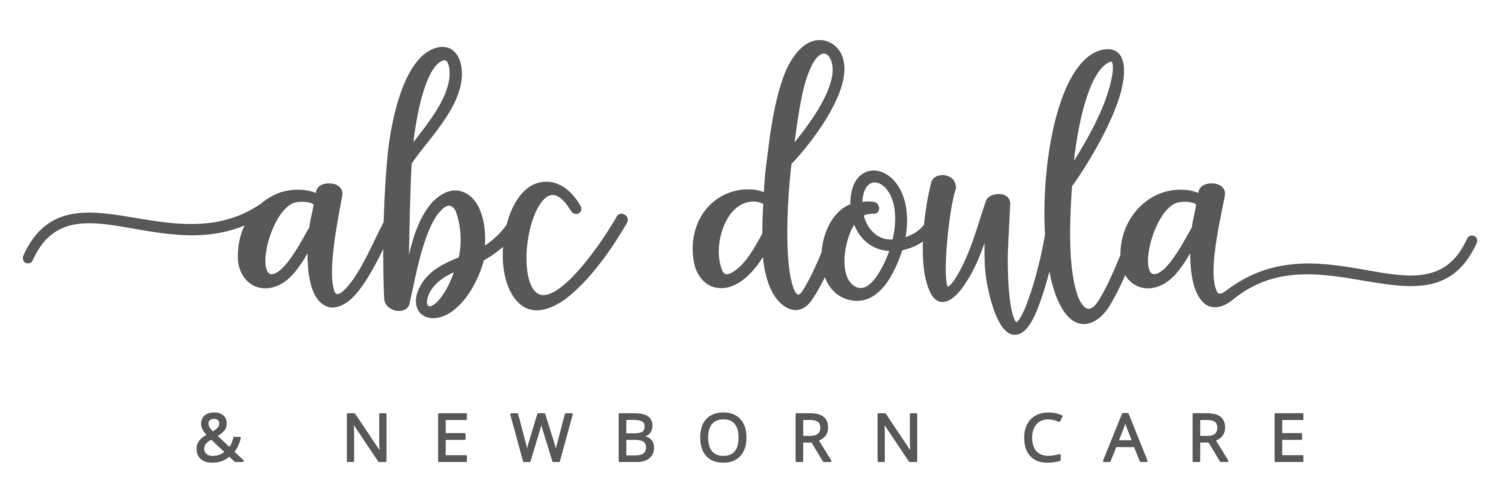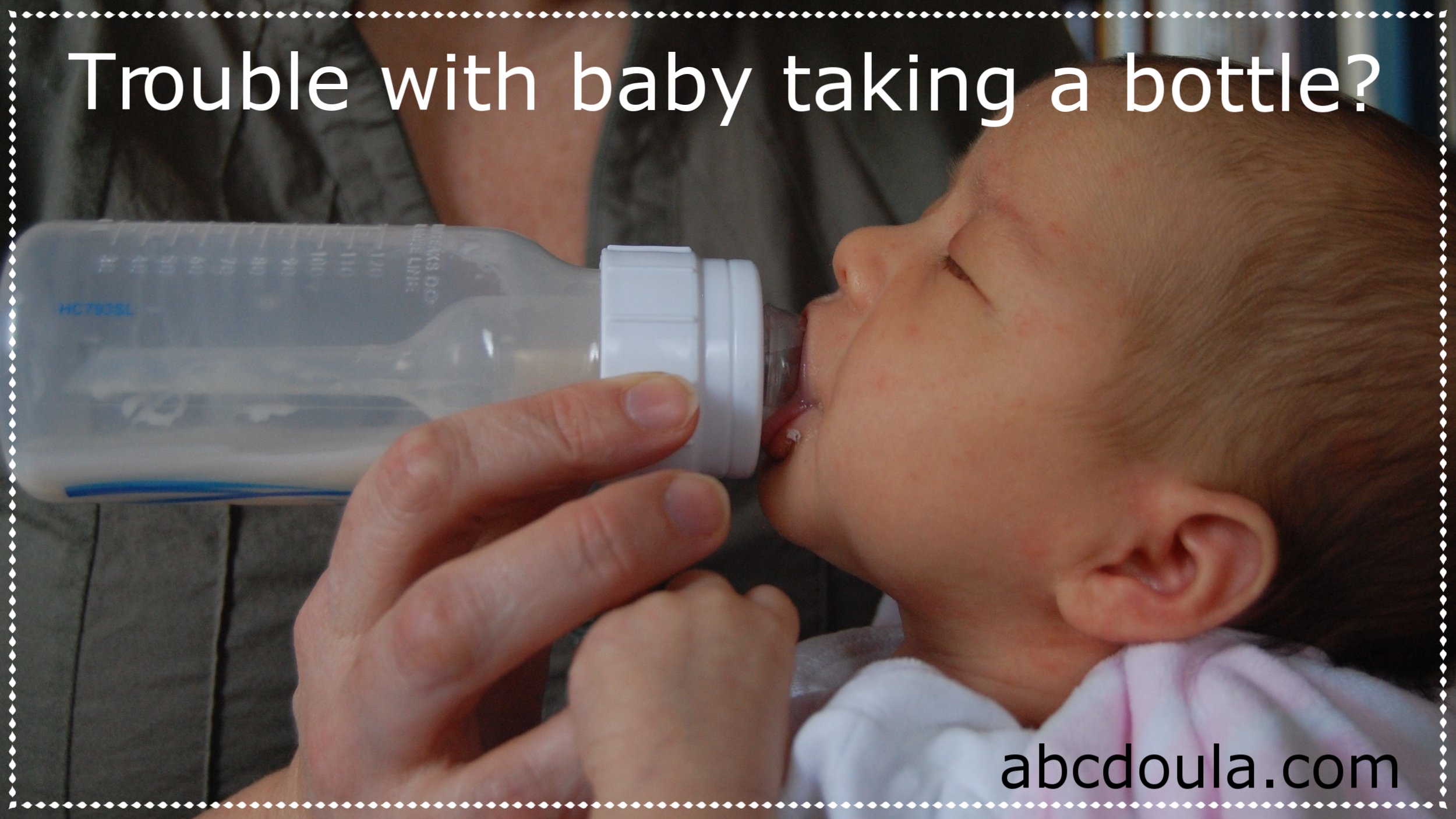Trouble with baby taking the bottle?
At moms group I used to get asked almost every week about how to get a reluctant baby to take a feeding from the bottle. Dozens of mamas have agonized over this task as they prepare to go back to work, or their partner or relative desperately wants to be included in the feeding, or they are slowly losing their milk supply and not able to turn the tide. It often results in a lot of anxiety for the breastfeeding mother, and certainly for the baby's caregivers as well.
As prevention seems to be the best solution to most things, here is my best advice (i.e. guidance, encouragement, not evidence-based): Don't wait too long (say past 6 or 8 weeks) because babies get to a point where Mama's warm body is really the source of food and all other substitutes fail miserably--that is not the easiest time to introduce a piece of silicone. The next biggest thing would be to keep the bottle in the baby's daily life so they stay in the habit of getting a supplemental feed (usually from Daddy or partner) each day, or at the least every other day. Don't worry so much about the timing, other than to build it into your schedule of pumping and preparing milk. The key is to keep it as part of a baby's life, so they don't lose the desire to get food this way.
Obviously most of the worried moms in my groups have already passed this point. If you have a baby who is already refusing the bottle, then we have a little more work to do. The biggest thing I recommend with an out and out Bottle Refuser (or a baby who 'plays' with the bottle nipple) is keeping the baby calm, and using persistence.
Here are a few things that mamas have told me work for them, and some that have worked with me with ABC Doula clients:
Try feeding in mid-morning, before a regular feed is due so baby is not so hungry that he can't learn a new skill.
Don't buy one of every bottle thinking the nipple makes the difference. Most babies will take whatever bottle nipple you have unless the flow is wrong. Some mamas say to look at your nipple after a feeding and see what shape it is and buy a bottle with a similar shape. I don't worry as much about this, but I try not to change it too often so baby has a chance to get familiar with this strange silicone thing. As with most baby things, there are lots of ways of doing this right.
Usually it is best to have the breastfeeding mama leave the room, and engage in something else that is noisy. Whomever is feeding the baby will need some time to get familiar with this new role, and they will certainly learn their own techniques for soothing baby in between.
Keep the baby calm. I find that a calm baby is better at learning new things. Use the soothing skills you have learned that work for this baby, allow baby to try to eat, and calm him/her when they get worked up. Try not to allow the baby to cry and cry, which often sends a breastfeeding mother running in to 'fix' it (both parties feeling like a failure).
Some families say that using a different position than mom feeds in works better. Others try to mimic the mother's breastfeeding position. Try both. And think outside the box. You might find the best way is to take the baby outside where they are really distracted and try there.
I have had good results by using a piece of mom's clothing between me and the baby, and not making eye contact while getting baby adjusted. Sometimes I also don't talk but rather use a white noise to help soothe baby (some babies could be thrown off a bit by my voice).
Sometimes I pull out all the stops and have to use all the S's at once while trying to keep baby calm. Swaddling, side-stomach, swinging/jiggling (in my arms or bouncing on the ball), using white noise, and then using the bait and switch with the pacifier or finger. This can even work for much older babies. Sometimes they even fall asleep, which I allow of course, only to be gently nudged by the bottle when they are still drowsy after sleeping a bit. Sometimes the half asleep attempts are the most successful.
Give baby time. Start trying weeks before you go back to work, and keep going until you come up with an alternate plan or baby decides this bottle contains the same wonderful stuff they get from mom, they just need to learn the new technique!
One trick I have seen work well is to bring the bottle to your nursing sessions as an “accessory” and allow baby to smell, feel, and explore it if they are interested. Many babies will happily accept a bottle after having it in mama’s armpit or cleavage for a couple dozen nursing sessions (you don’t need to have milk in the bottle, just familiarize them with the shape and feeling).
Last tip: I have the very best outcomes with this approach, especially with the full out *Bottle Refusers*. I get on the bouncy ball with baby, sometimes wrapped or at least held firmly. While using a rhythmic (but not fast or too strong) bounce, I allow baby to be soothed by the motion while I put a little milk on their philtrum (base of the nose/upper lip area). Then I set the collar of the bottle on the baby's chin with gentle pressure, and make sure the nipple is pressing on the philtrum. We bounce like this until baby engages their rooting reflex and then roll the nipple into baby's mouth, guiding it along the roof of the mouth until baby starts sucking (a reflex as well with pressure on the palate). I keep bouncing baby until the sucking rhythm takes over and we allow baby to eat without as much movement. We don't have to use the ball each time after that, but it does seem to work well for getting through the frustration phase of initially taking the bottle.
Feel free to add your comments if you have additional ideas. This topic probably fills up parenting forums so I will not try to duplicate that info here. Just a doula sharing her tips with you...

